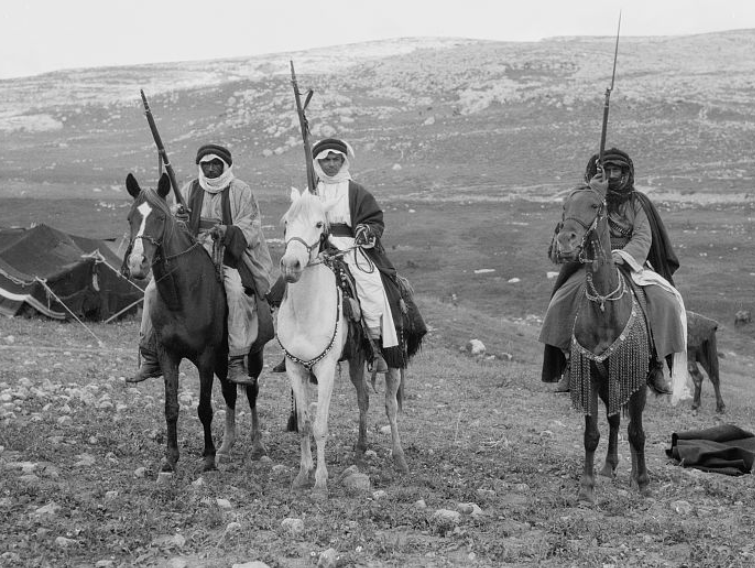
The Concept of Arabian Horse Strains and Sub-Strains
December 30, 2023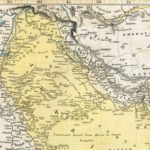
About the Homeland of the Arabian Horse
January 1, 2024Western Movements and Organizations for Preserving The Desert Horse
By: Joe Ferriss
It has long been known that Bedouin horse breeding tribes of the Arabian Peninsula valued the pedigrees and histories of their horses. In the 19th century when Egyptian ruler Viceroy Abbas Pasha I collected his Arab horses it was important for him to ascertain their histories and background from the Bedouin so that he was confident in breeding the authentic Arab horse. In the late 19th century when Wilfrid and Lady Anne Blunt obtained their Arab horses, Lady Anne was quite particular in finding out all she could about their backgrounds to her satisfaction. To these people there was only one breed of Arab horse, and they understood that its identity comes from the Bedouin horse breeding tribes of the Arabian Peninsula.
However, this desire to know all about the lineage and histories of Arab horses acquired from the desert was not universal among all those who obtained them. For some it was very important and for some others it meant very little. Over time, some Arabian horse pedigrees had lost histories, or had some unknown ancestors from unknown sources, or there were differences of opinion over the authenticity of some sources. Some importing countries in the Western world were more interested only in using Arab horse blood for improving local populations and in distant times some of these "hybrids" became considered purebred Arabian horses in the same way as other livestock breeds developed from blends.
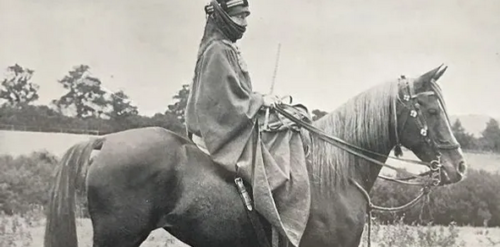
Within two decades after World War II, the Arabian horse became very popular. The U.S. had the largest population of Arabians of any one country. As the Arabian horse became modern and more removed from the context of its origins, some people expressed an interest in preserving the original Bedouin type Arab horse. These people were concerned about not being able to find complete pedigrees to their satisfaction within many of the registered purebred Arabians in the way that Abbas Pasha I and Lady Anne Blunt had preferred. This concern for preservation of the original identity of the Arab horse would later spawn a number of preservationist movements to identify what remained among the registered populations.
The Blue Arabian Horse Catalog: BLUE STAR and Blue List Arabians
By the mid 1950's in the U.S. a young woman, inspired by warnings from others such as Carl Raswan that the number of Arabian horses with pedigrees of known connections in all lines back to the originating Bedouin culture was shrinking. The young woman's name was Miss Jane Ott and she began compiling a list of all such remaining horses in North America based on her research and opinions. Her work was kept in a blue notebook binder. By the end of the decade of the 1950's this would evolve into a published work called The Blue Arabian Horse Catalog. In this catalog the author simply states that "...the Catalog is published to encourage the preservation and increased production of the type of Arabian horse originally found in the possession of the Bedouin tribes of Arabia." There were two main categories of Arabians in the catalog: BLUE STAR, which were identified in capital letters, and Blue List, not capitalized. On the surface the difference between the two was simple. BLUE STAR horses traced to any of the known Arabian strains with the exception of the Muniqi and its related strains. Blue List horses traced ALL the known strains including the Muniqi. The distinction between the two appears to have its roots in Carl Raswan's writing about the Muniqi strain and his perceived difference of it from other strains. For some it was merely academic, but it was important to some others. There was also a third category in the catalog called Sub-List. It contained the other two categories but included any other horse about which the author was not as certain, or she believed needed a separated distinction. The geographic nationality of horses listed in The Blue Catalog was not limited to just Egypt but also included Saudi Arabia, Syria, the Arabian Gulf, or anywhere authentic Arabians came from, so long as it fit the author's criteria for being included. The catalog's focus was on horses imported to North America and their offspring. Horses listed in The Blue Catalog were not required to be registered in the U.S. stud books although most all were. Some breeders of Egyptian, Egyptian-Desert, and Desert bred lines were inspired by The Blue Catalog's message and efforts were made to preserve these bloodlines, spawning the first such movement to identify and preserve "Asil" Arab horses. The catalog was sold as a ring bound blue notebook available by subscription. It included periodic supplements containing more of her writing and horse listing updates. The final supplement was dated 1969. No future updates were added to the catalog after that. In the decade of her published work Miss Jane Ott managed to influence a whole generation to the importance of preservation of the desert horse.
The Pyramid Society: Straight Egyptian Arabians
At about the time of The Blue Catalog's final supplement, U.S. and Canadian breeders of horses descending from Egyptian imports were interested in forming an organization to preserve the Egyptian horse. So in 1969 The Pyramid Society was created. Unlike the Blue Catalog, The Pyramid Society had a specific geographical-cultural focus: which is horses representing the type of breeding only representing the country of Egypt, but whose ancestry traced in all lines to horses of "Arabia Deserta". Preservation of Egyptian bloodlines lines was important and in doing so a few collateral individuals were included, being related to the foundation stock that has bred on to the present in accepted lines. The identifying terminology for the organization was "Straight Egyptian." Unlike The Blue Catalog, all such "Straight Egyptian" horses had to be eligible by pedigree for registration in the U.S. Registry whether imported or not. Since Egypt's Arabian history goes beyond stud books, the Society's definition evolved to be sure to include descendants of all such horses imported from Egypt whether or not they had stud book entries. Because The Pyramid Society became international in scope, it eventually published a Stud Book in 2016 named The Pyramid Society Stud Book for Straight Egyptian Arabian Horses Worldwide. This Stud Book explained in detail the ancestral foundation for all Straight Egyptian Arabians worldwide and consequently its content became the basis for clarifying the definition of a Straight Egyptian Arabian. Like followers of the "Blue Catalog movement", many breeders of Straight Egyptian Arabians also took an interest in strains and history. For decades the organization published multiple volumes of reference books filled with educational information about the Egyptian horse and has held educational seminars at its annual Egyptian Event.

Al Khamsa Inc.: Al Khamsa Arabians
By the early 1970's in the U.S., a growing number of followers of The Blue Catalog (which was no longer being published) felt that an organization was needed to carry forward the progress inspired by The Blue Catalog. So, an organization was formed in 1973 and its name became "Al Khamsa", symbolizing the "legend" of five original mares that created the breed. Al Khamsa recognized nearly all of the same foundation animals that were identified in The Blue Catalog. However, Al Khamsa took a broader view and included some additional horses, so it was not the same as The Blue Catalog. Al Khamsa's definition basically identifies "horses in North America that can be reasonably assumed to descend entirely from Bedouin Arabian horses from tribes of the deserts of the Arabian Peninsula." Horses of interest to Al Khamsa are mainly based on stock imported and bred in North America, but more recently, it has added a few additional foundation horses in foreign countries not yet imported to North America. Like the Blue Catalog, it catalogs all horses that come from any sources that fit its definition of having such Bedouin roots. Like The Blue Catalog, a horse was not required to be registered in the U.S. stud books to be recognized, though most are registered. Like The Pyramid Society, Al Khamsa publishes multiple reference books and has had its own magazine, the Khamsat, for nearly 40 years. Al Khamsa maintains a website that includes perhaps the most comprehensive ancestral database on the Al Khamsa horses available with much early documentation, all available free online. Al Khamsa has held annual educational conventions since 1974 and continues to widen its focus in preservation of horses of Bedouin descent.
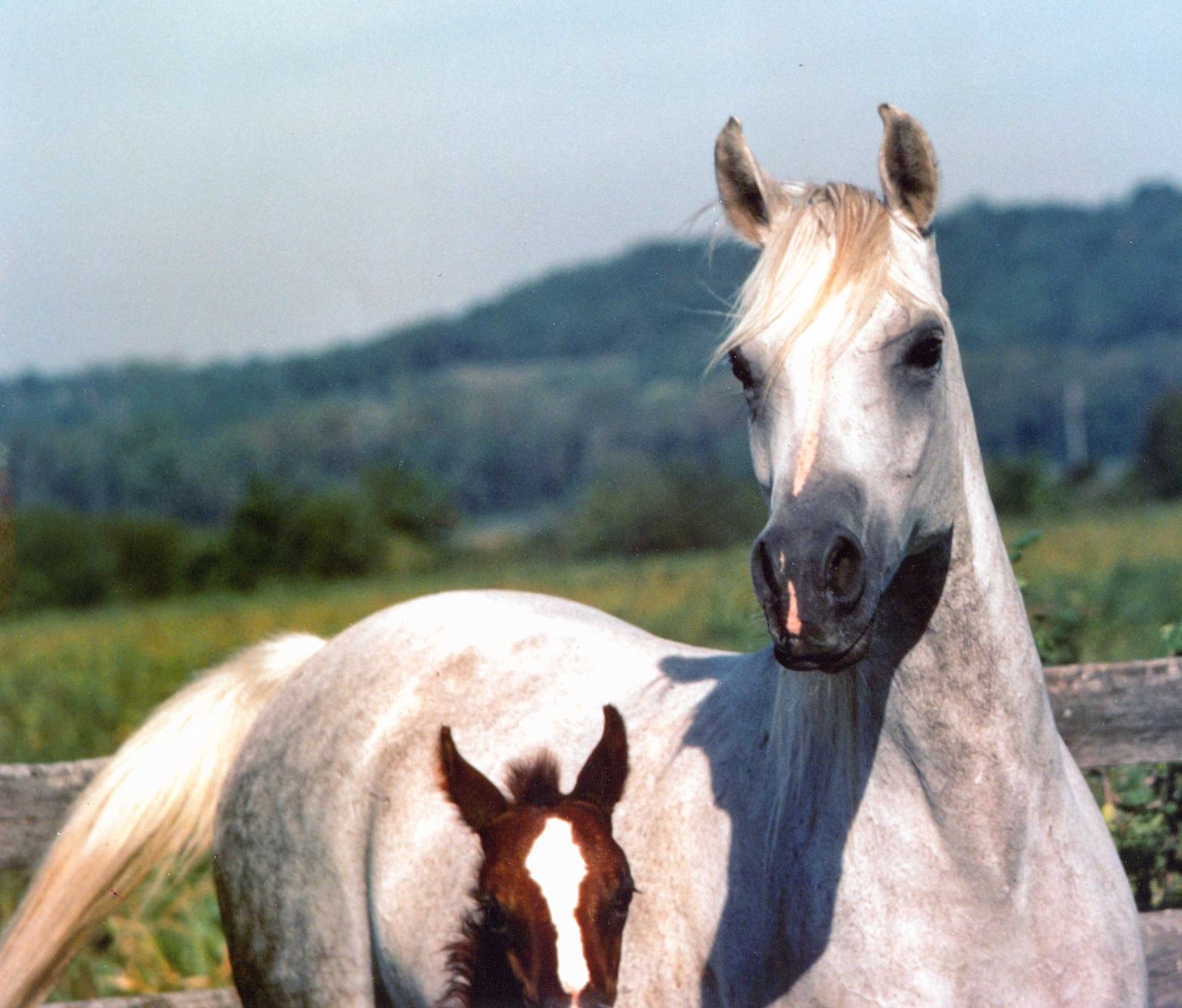
Asil Club: Asil Arabians
Also, in the early 1970s in Europe, another organization developed along similar lines as Al Khamsa. This organization was named The Asil Club and used the term "Asil Arabian" to identify horses representing the organization. Its definition basically defines an Asil Arabian as "a horse whose pedigree is exclusively based on horses bred by the Bedouin without any evidence whatsoever of non-Arabian blood being admixed at any time." Most of the horses in Europe fitting this definition were also already "Straight Egyptian" so all of The Pyramid Society lines were accepted in the Asil Club, and a few others with additional "desert bred" lines were included in the Asil Club. For decades, the Asil Club has also published large reference volumes with considerable information about the Bedouin culture as well as the horses it represents. The Club's published books placed symbols next to the horses' names to identify which horses are Straight Egyptian and which horses included also other "desert" lines. Eventually the Asil Club's scope became more international with participation from breeders in the Arab world and elsewhere. It has held an enjoyable annual event named the Asil Cup for decades, and the Club has done a great deal to promote the horses of its interest internationally.
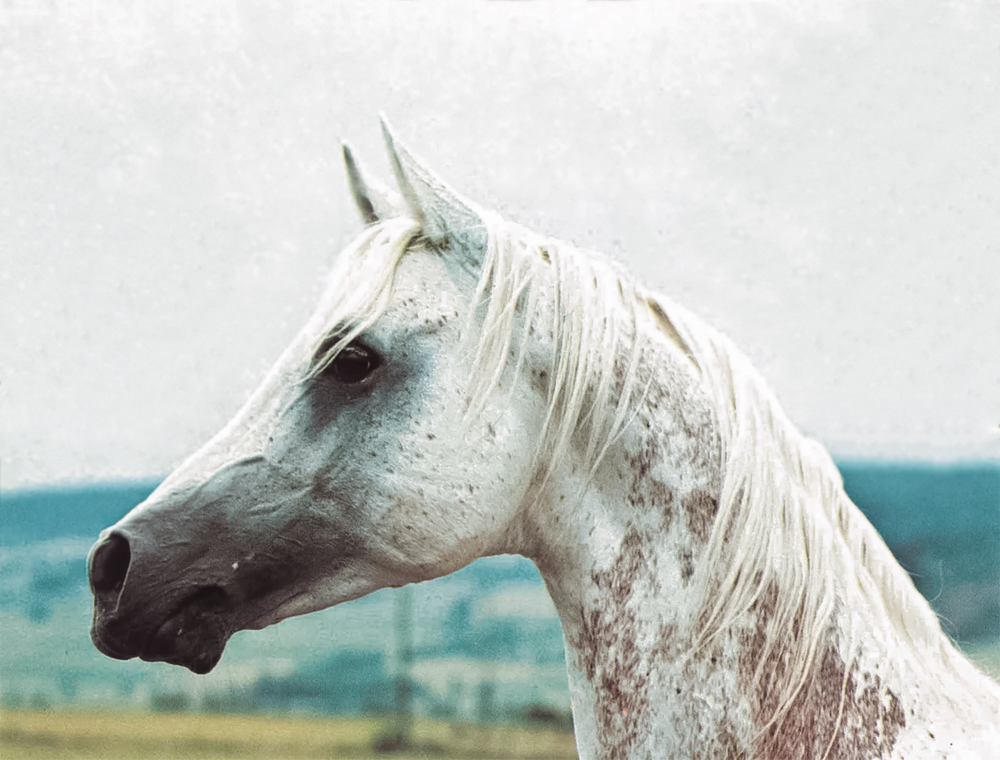
All three of the organizations, Al Khamsa, the Asil Club, and The Pyramid Society have published books over the years, no doubt inspired by the original Blue Catalog. However, each organization does not always recognize all the same horses in each group for various reasons. For The Pyramid Society it is mainly geographic – about the "Egyptian" horse only. However, the Asil Club also recognizes horses from other desert sources, and Al Khamsa has done the same for those that came to North America. Some "Straight Egyptians" were not included in The Blue Catalog, because its author wanted more ancestral information. Likewise, some "Straight Egyptians" are not currently included in Al Khamsa either, although that organization has an open door policy for inclusion in the future whenever more information becomes available on certain ancestors not currently accepted.
I have created a simple graphic to give a general understanding of the relationship between bloodlines recognized by these organizations and The Blue Catalog. Each shape symbolizes what bloodlines are recognized. The central overlapping of shapes show what they all have in common. The red square represents the "Straight Egyptian" population. Because each organization has very specific criteria for which bloodlines it accepts, it is best to contact these organizations for specific details. All of them have websites that can be found on the Internet.
In the bigger view of things, one has to ask the question: had there not been an original Blue Catalog, and the organizations that succeeded it, would we be able to enjoy the magnificent "horse of the desert" as we do today? It is fortunate indeed that we still have those today who care enough about preserving the heritage of the "Bedouin horses" as it was in the days of Abbas Pasha I, Lady and Wilfrid Blunt, and other dedicated people who desired to preserve the authentic Arab horse. But the bigger question is this really enough? Taken in its totality, the sum total of all Bedouin type, Asil horses recognized by what is identified in the chart by some accounts only represents about less than 12 percent of the entire global registered Arabian horse population. If that is even a conservative estimate it still creates a kind of "clarion call" that the breed's original identity, its strains and characteristics are in serious danger of being lost to the past. The Pyramid Society Straight Egyptian horses all descend only from 66 original desert bred foundation horses, of which some are already in danger of being lost, including potentially an entire strain, the Shuweyman Sabbah. While Al Khamsa horses descend from a base of foundation horses about four or five times that of the Straight Egyptian horses, the potential rate of loss of foundation horses is even greater. Whatever happens to these two groups will most certainly also impact the Asil Club which has many foundation horses in common with Al Khamsa and The Pyramid Society.
Without question, these considerations are among the most paramount for justifying the Manifesto movement. Such a movement offers a renaissance to restore the identity of the Arab horse globally and in the Arab world for the newcomers longing for a connection to their roots while celebrating something that is truly their own – the Arab horse so thoughtfully provided to Abbas Pasha I, Lady Anne Blunt, and Homer Davenport among other early benefactors. The time is now.


